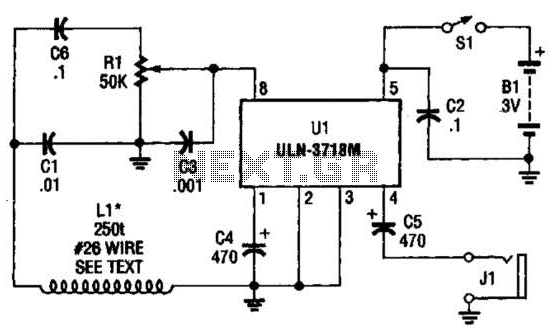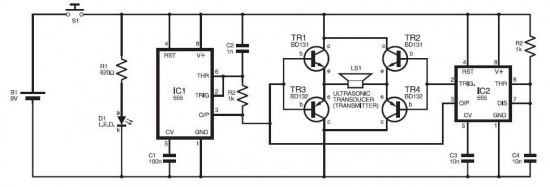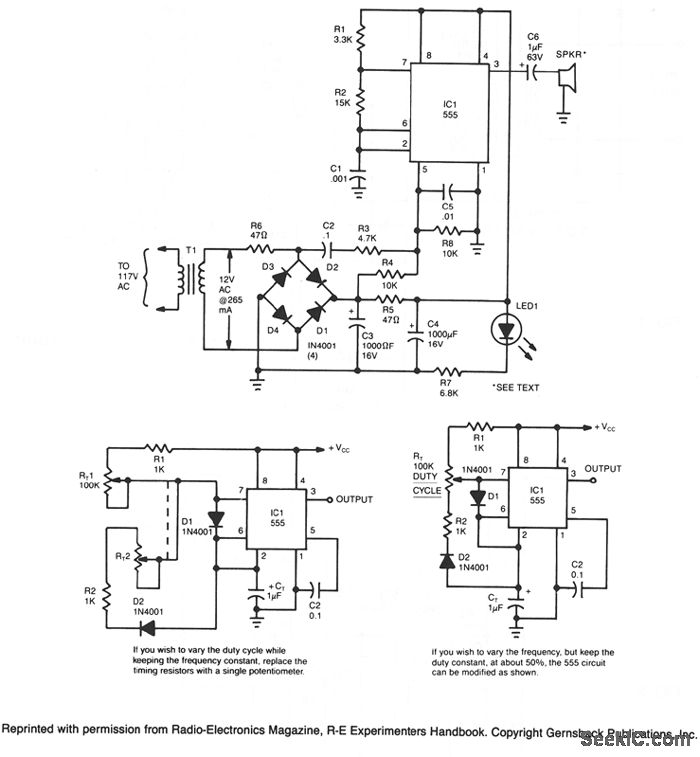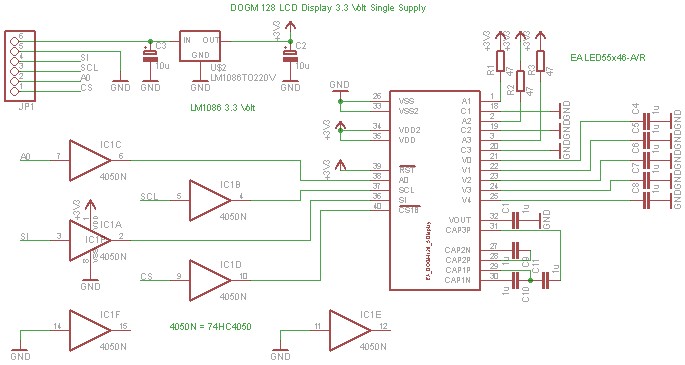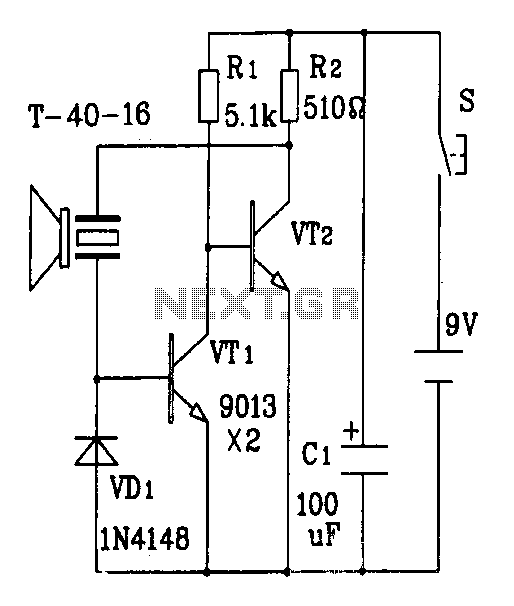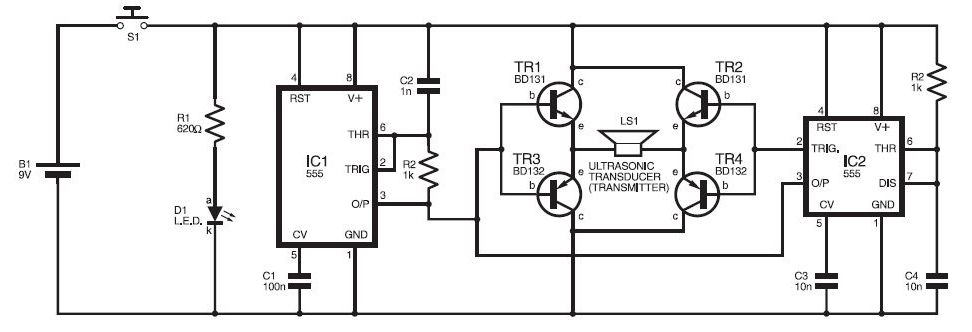
ultrasonic dog whistle
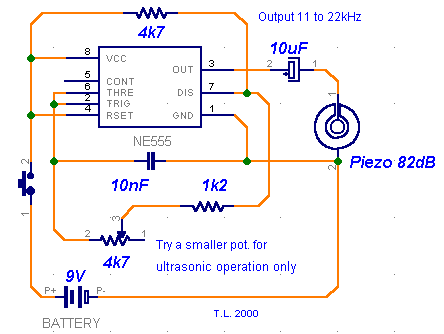
It is well known that many animals are particularly sensitive to high-frequency sounds that humans cannot hear. Many commercial pest repellers based on this principle are available, most of them operating in the range of 30 to 50 kHz. The objective was to design a more powerful audio frequency and ultrasonic sound generator that could be used for training dogs. This device could potentially deter pets from barking at night and help manage aggressive behavior from other dogs.
The proposed ultrasonic sound generator operates within a frequency range that is particularly effective for canine auditory perception, typically between 20 kHz and 40 kHz. The circuit design incorporates a microcontroller, which is programmed to generate specific sound frequencies. This microcontroller can be interfaced with a user-friendly control panel, allowing the owner to select different frequencies or patterns depending on the desired training outcome.
The core of the circuit consists of a signal generator, which can be implemented using a direct digital synthesis (DDS) module or a simple oscillator circuit, such as a 555 timer configured in astable mode. The output from the signal generator is then fed into a power amplifier, which boosts the signal to a level sufficient for effective transmission through a piezoelectric transducer. This transducer converts the electrical signal into ultrasonic sound waves.
The design also includes a feedback mechanism, where an optional microphone can be integrated to monitor the ambient noise level. This feature allows the device to adjust its output dynamically, ensuring that the ultrasonic sound remains effective even in the presence of competing sounds.
Power supply considerations are critical for portability and usability. The circuit can be powered by rechargeable batteries, which would provide the necessary voltage and current for the operation of the microcontroller and amplifier. Additionally, a low-power design approach is recommended to extend battery life, possibly incorporating a sleep mode for the microcontroller when not in active use.
Safety features should also be included to prevent accidental activation or excessive sound output. A user-configurable timer can limit the duration of sound emission, and an LED indicator can provide visual feedback to the user regarding the operational status of the device.
Overall, this ultrasonic sound generator represents a versatile tool for dog training, with the potential to enhance communication between pets and their owners while promoting more desirable behaviors.It`s well known that many animals are particularly sensitive to high-frequency sounds that humans can`t hear. Many commercial pest repellers based on this principle are available, most of them operating in the range of 30 to 50 kHz.
My aim was, however, to design a slightly different and somewhat more powerful audio frequency/ultrasonic sound generator that could be used to train dogs. Just imagine the possibilities - you could make your pet think twice before barking again in the middle of the night or even subdue hostile dogs (and I guess burglars would love that!)..
🔗 External reference
The proposed ultrasonic sound generator operates within a frequency range that is particularly effective for canine auditory perception, typically between 20 kHz and 40 kHz. The circuit design incorporates a microcontroller, which is programmed to generate specific sound frequencies. This microcontroller can be interfaced with a user-friendly control panel, allowing the owner to select different frequencies or patterns depending on the desired training outcome.
The core of the circuit consists of a signal generator, which can be implemented using a direct digital synthesis (DDS) module or a simple oscillator circuit, such as a 555 timer configured in astable mode. The output from the signal generator is then fed into a power amplifier, which boosts the signal to a level sufficient for effective transmission through a piezoelectric transducer. This transducer converts the electrical signal into ultrasonic sound waves.
The design also includes a feedback mechanism, where an optional microphone can be integrated to monitor the ambient noise level. This feature allows the device to adjust its output dynamically, ensuring that the ultrasonic sound remains effective even in the presence of competing sounds.
Power supply considerations are critical for portability and usability. The circuit can be powered by rechargeable batteries, which would provide the necessary voltage and current for the operation of the microcontroller and amplifier. Additionally, a low-power design approach is recommended to extend battery life, possibly incorporating a sleep mode for the microcontroller when not in active use.
Safety features should also be included to prevent accidental activation or excessive sound output. A user-configurable timer can limit the duration of sound emission, and an LED indicator can provide visual feedback to the user regarding the operational status of the device.
Overall, this ultrasonic sound generator represents a versatile tool for dog training, with the potential to enhance communication between pets and their owners while promoting more desirable behaviors.It`s well known that many animals are particularly sensitive to high-frequency sounds that humans can`t hear. Many commercial pest repellers based on this principle are available, most of them operating in the range of 30 to 50 kHz.
My aim was, however, to design a slightly different and somewhat more powerful audio frequency/ultrasonic sound generator that could be used to train dogs. Just imagine the possibilities - you could make your pet think twice before barking again in the middle of the night or even subdue hostile dogs (and I guess burglars would love that!)..
🔗 External reference
